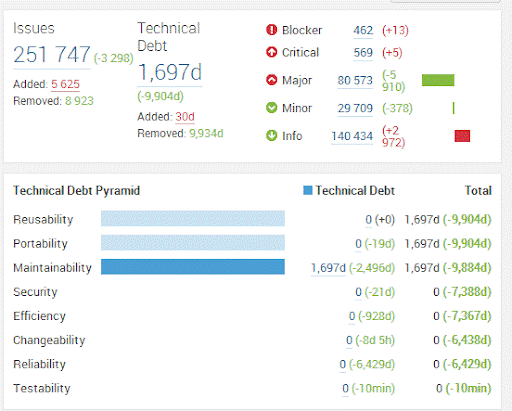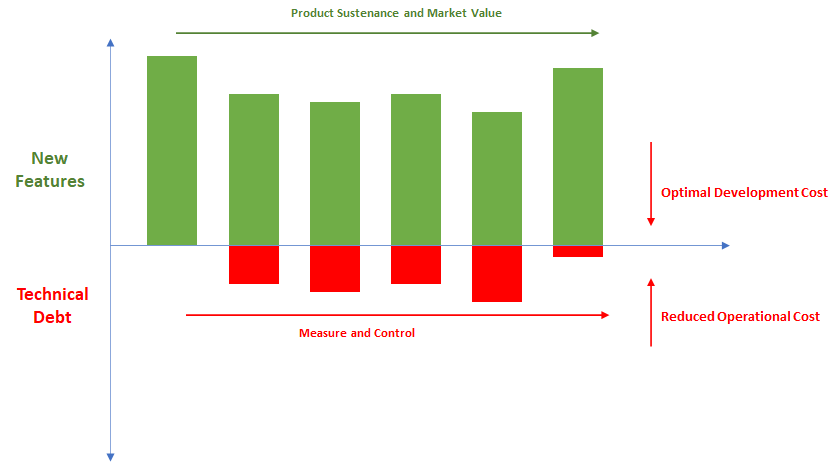
Sumeet Madan
With a remarkable 18-year tenure in software engineering, agile training, coaching, and consulting,... Read more
![]() Get Your AI-Enabled Scrum Master Certification for Just ₹1,500 (Save 85%)!
Get Your AI-Enabled Scrum Master Certification for Just ₹1,500 (Save 85%)!
Scrum.Org
SAFe®
ICAgile
Scrum Alliance
Technical Agility
Kanban
Business Analysis
Project Management
AI-Enabled
Scrum.Org
SAFe®
ICAgile
Scrum Alliance
Technical Agility
Kanban
Business Analysis
Project Management
AI-Enabled

Sumeet Madan
With a remarkable 18-year tenure in software engineering, agile training, coaching, and consulting,... Read more

Previous articles of mine explained, what is technical debt and how this impacts the total cost of ownership. The articles also included why a Product Should care about the technical debt and allow the development team to refactor the code to control the technical debt.
Anything that can be measured can be improved. For improving (lower) the technical debt, the pre-requisite is to measure it first. Developers or sometimes the Product companies do categorize the technical debts.
There are no rules defined, but one can organize the technical debts and then use some methods to deal with them.
To deal with technical debt, the developers should follow three simple steps:

There could be various ways and tools in the market that help measure technical debt, but the one popular amongst all is the static code analysis tool "SONARCUBE."
SONARQUBE is an open-source tool that comes with plugins for various coding languages. The tool measures the technical debt in days for the lines of code written for the Product. The tools help navigate developers to the lines in the code that require consideration.

This tool could help with the coding standards and clean coding practices that developers should follow when writing the code. For dealing with tech debts from the legacy codes, the are of great help.

With a remarkable 18-year tenure in software engineering, agile training, coaching, and consulting, Sumeet's expertise is unparalleled. As a certified Professional Scrum Trainer (PST) from Scrum.org and a distinguished SAFe® Practice Consultant (SPC), Sumeet brings a wealth of knowledge and skill to every project, making a lasting impact on organizations seeking to embrace Agile methodologies.
WhatsApp Us

We will get back to you soon!
For a detailed enquiry, please write to us at connect@agilemania.com

